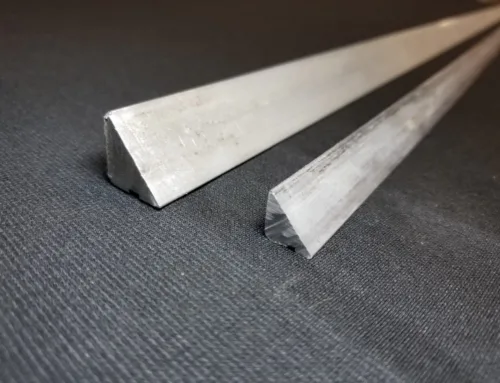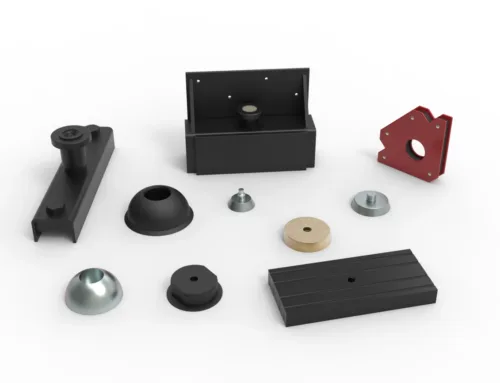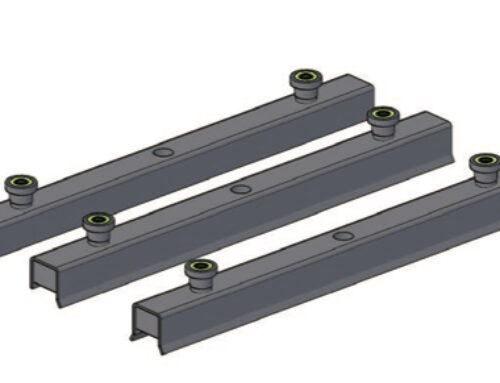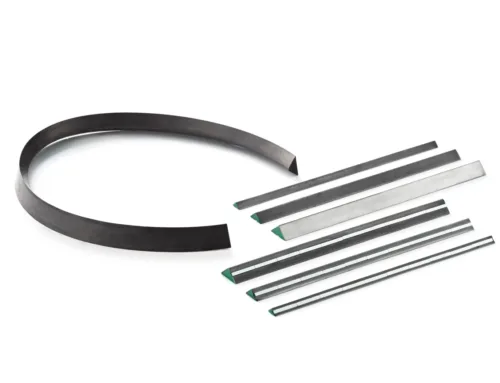Are you wondering which rare earth magnet is the best fit for your project: samarium cobalt vs neodymium magnets? Choosing the right magnet type can make all the difference in performance, durability, and cost-efficiency. Whether you’re an engineer designing high-precision motors, a buyer sourcing materials, or a hobbyist exploring magnet options, understanding these two powerhouse magnets is essential.
In this detailed comparison, we’ll break down the key differences between samarium cobalt (SmCo) and neodymium (NdFeB) magnets—covering everything from magnetic strength and temperature tolerance to corrosion resistance and industry use cases. Plus, you’ll get insights into pricing and supply chain factors that impact your buying decision.
If you want to avoid costly mistakes and choose the ideal magnet for your specific needs, this guide is for you. Let’s dive into the world of samarium cobalt vs neodymium magnets and help you make an informed choice with expert tips from NBAEM, a trusted Chinese supplier specializing in both magnet types.

samarium cobalt vs neodymium magnets
What Are Samarium Cobalt and Neodymium Magnets
Samarium Cobalt (SmCo) and Neodymium Iron Boron (NdFeB) magnets are both types of rare earth magnets known for their exceptional magnetic properties. They are made from alloys of rare earth elements, which give them significantly higher performance compared to conventional ferrite or alnico magnets.
Samarium Cobalt magnets are composed mainly of samarium (Sm) and cobalt (Co), with trace amounts of other metals like copper and iron to enhance performance. They were first developed in the early 1970s and were the strongest permanent magnets available before neodymium magnets were introduced. SmCo magnets are prized for their ability to maintain magnetic strength at high temperatures and their outstanding resistance to corrosion without the need for coatings.
Neodymium magnets, chemically known as NdFeB, are made from neodymium (Nd), iron (Fe), and boron (B). Initially developed in the early 1980s, they quickly became the most powerful permanent magnets available, capable of producing much stronger magnetic fields than SmCo magnets for the same size. However, they typically require protective coatings such as nickel or epoxy to prevent oxidation.
Manufacturing Processes
Both SmCo and NdFeB magnets go through similar manufacturing stages, though the materials and exact processes differ:
- Powder preparation – The raw metals are melted, alloyed, and ground into fine powder.
- Pressing – The powder is aligned in a strong magnetic field and pressed into a desired shape.
- Sintering – The compacted powder is heated at high temperatures to achieve density and magnetic strength.
- Machining – Magnets are cut or ground to precise dimensions.
- Coating (for NdFeB) – Neodymium magnets are typically coated to resist corrosion.
- Magnetization – A powerful magnetic field is applied to align the domains and create a permanent magnet.
If you’re interested in the specifics of high-performance SmCo magnets, you can check out our detailed guide here.
Magnetic Properties Comparison
When comparing samarium cobalt vs neodymium magnets, the differences in performance are clear once you look at their magnetic properties.
Magnetic strength
- Neodymium (NdFeB) is the strongest permanent magnet material available, with a maximum energy product reaching 35–52 MGOe.
- Samarium cobalt (SmCo) is lower, usually around 20–32 MGOe, but still strong enough for many demanding applications.
Temperature stability
- SmCo handles high heat far better, working in environments up to 300°C (572°F) without losing much strength.
- NdFeB starts losing magnetic performance above 80–150°C (176–302°F) unless special high-temp grades are used.
Corrosion resistance and durability
- SmCo is highly resistant to rust and doesn’t usually need a coating.
- NdFeB is prone to corrosion and almost always requires a protective coating like nickel, epoxy, or zinc.
Coercivity and resistance to demagnetization
- Both magnets have high coercivity, but SmCo remains more stable when exposed to very strong opposing magnetic fields or high temperatures.
- NdFeB has higher initial pull strength but is easier to demagnetize under heat stress.
Physical characteristics
- SmCo is denser and more brittle, so it needs careful handling to avoid chipping.
- NdFeB is slightly less brittle but still fragile compared to steel parts, especially without a coating.
Here’s a quick property comparison:
| Property | SmCo Magnets | NdFeB Magnets |
|---|---|---|
| Max Energy Product (MGOe) | 20–32 | 35–52 |
| Max Operating Temp | ~300°C / 572°F | 80–150°C / 176–302°F |
| Corrosion Resistance | Excellent | Poor (needs coating) |
| Coercivity at High Temp | Very High | Moderate to High |
| Brittleness | High | Moderate |
Advantages and Disadvantages
Samarium Cobalt Magnet Pros
- High temperature tolerance – Works reliably in environments up to around 300°C, making it a go-to for high-temp operations.
- Excellent corrosion resistance – Naturally resistant to rust and oxidation without the need for coatings.
- Long lifespan – Maintains magnetic strength for decades, even in tough industrial settings.
Samarium Cobalt Magnet Cons
- Higher cost – Raw materials like samarium and cobalt come at a premium.
- Brittle material – Can chip or crack if dropped or struck.
- Lower magnetic strength compared to NdFeB – Good strength, but not as powerful as neodymium.
Neodymium Magnet Pros
- Superior magnetic strength – The strongest type of permanent magnet available, ideal when max pull force is priority.
- Cost-effective – Generally cheaper per unit of magnetic strength than SmCo.
- Widely available – Easy to source in many shapes, sizes, and grades due to large-scale production.
Neodymium Magnet Cons
- Poor temperature tolerance – Loses strength above 80–200°C depending on the grade.
- Prone to corrosion – Requires coatings (nickel, zinc, epoxy) to prevent rust, especially in humid or marine settings.
- Shorter lifespan in harsh conditions – Performance can degrade faster if exposed to heat, moisture, or chemicals without protection.
Applications and Industry Use Cases
Samarium cobalt (SmCo) and neodymium (NdFeB) magnets are both rare earth magnets, but they shine in different industries because of how they handle strength, heat, and environment.
Where Samarium Cobalt Magnets Are Used
SmCo magnets hold their magnetic strength in conditions where many other permanent magnets fail. They’re common in:
- Aerospace – Used in navigation systems, actuators, and high-temp components where reliability is critical.
- Automotive sensors – Ideal for under-the-hood parts like ABS wheel sensors and throttle position sensors that see high heat and vibration.
- High-temperature environments – Industrial equipment, turbines, and even oil and gas tools where temperatures can exceed what neodymium can handle.
Where Neodymium Magnets Are Used
NdFeB magnets are the go-to choice when you need very high magnetic strength at a reasonable cost. They show up in:
- Electronics – Smartphones, speakers, headphones, and hard drives.
- Motors – Electric vehicle motors, industrial drives, and compact robotics actuators.
- Renewable energy – Wind turbine generators and other clean energy systems.
- Consumer products – Magnetic tool holders, closures, toys, and fitness gear.
NBAEM Real-World Supply Examples
From NBAEM’s experience supplying US manufacturers:
- We’ve provided SmCo magnets for aerospace firms in Texas needing high-temp resistance in flight control systems.
- We’ve supplied NdFeB magnets to electric motor makers in Michigan pushing for more torque in a smaller footprint.
- A renewable energy customer in California sourced large NdFeB assemblies from us to increase wind turbine efficiency.
- An automotive client in Ohio switched to SmCo sensors from NBAEM to solve heat-related demagnetization in engine bay electronics.
SmCo serves best when heat and harsh environments are the deciding factor, while NdFeB wins when compact size with maximum strength is the main goal.
Cost Considerations and Supply Chain Insights
When comparing samarium cobalt vs neodymium magnets, cost is one of the first factors most US buyers look at. In general, SmCo magnets are more expensive than NdFeB magnets. That’s because samarium and cobalt are costly raw materials, and the manufacturing process for SmCo is more complex. Neodymium magnets, on the other hand, benefit from wider availability of raw neodymium and more streamlined mass production, which keeps prices lower.
A few points that affect cost:
- Raw material prices: Samarium and cobalt costs fluctuate based on mining output and demand, while neodymium prices are tied to rare earth market trends.
- Manufacturing complexity: SmCo magnets require precise processing for high-temperature stability, which adds production cost.
- Volume and shapes: Larger orders and standard shapes usually get better pricing.
From a global supply standpoint, China dominates the rare earth magnet industry — both SmCo and NdFeB. NBAEM sources directly from trusted manufacturers in China, meaning stable pricing, dependable lead times, and strict quality checks before shipping to the US market.
Typical lead times:
- In-stock sizes: 1–2 weeks to US customers.
- Custom orders: 4–6 weeks depending on specs and finishing.
Minimum order quantities (MOQ) vary:
- NdFeB: usually lower MOQ, making it practical for smaller runs.
- SmCo: often higher MOQ due to production setup costs, but NBAEM works with flexible batch sizes to support prototyping and low-volume needs.
For US companies, balancing budget, project specs, and supply reliability is key. With NBAEM’s supply chain setup, buyers get access to competitive Chinese factory pricing without the usual headaches in sourcing and importing.
How to Choose the Right Magnet for Your Project
When deciding between samarium cobalt (SmCo) and neodymium (NdFeB) magnets, we always suggest looking at your project’s real-world needs first. The right fit isn’t just about magnetic strength — it’s also about where and how the magnet will be used, what environment it will face, and how much you want to spend.
Key Questions to Ask
Before buying, lock in these details:
- What’s the highest temperature it will face? If it runs hot (above 300°F), SmCo is the safer choice.
- How strong does it need to be? For max pull in tight spaces, NdFeB is hard to beat.
- Will it be exposed to moisture, salt, or chemicals? SmCo handles corrosion naturally; NdFeB needs protective coating.
- What’s your budget? NdFeB is usually more cost-effective, SmCo costs more but lasts longer in demanding setups.
Quick Comparison
| Factor | Samarium Cobalt (SmCo) | Neodymium (NdFeB) |
|---|---|---|
| Magnetic Strength | High, but less than NdFeB | Very High |
| Temperature Tolerance | Excellent (up to ~572°F / 300°C) | Fair (up to ~176°F / 80°C std.) |
| Corrosion Resistance | Excellent (no coating needed) | Poor without coating |
| Cost | Higher | Lower |
| Durability in Harsh Environments | Excellent | Moderate (depends on coating) |
NBAEM Expert Tips
- Think long-term. If your magnet will see heat, vibration, or exposure to harsh elements, SmCo might save you money over time.
- For high-volume consumer products, NdFeB’s lower cost and higher strength give better value if you can keep heat and corrosion under control.
- Match magnet grade to application, not just size — higher grades in either material can change performance dramatically.
- Ask for samples before committing to a large order; NBAEM can supply both SmCo and NdFeB in various coatings, shapes, and grades.
NBAEM Magnet Solutions
At NBAEM, we supply both samarium cobalt (SmCo) and neodymium (NdFeB) magnets in a wide range of grades, sizes, and shapes to match different performance and budget needs. Whether your project calls for high temperature stability in aerospace sensors or maximum magnetic strength in a compact motor, we can source or custom-produce the right magnet for you.
We follow strict quality assurance procedures with full ISO-certified production and testing. Every batch goes through dimensional checks, magnetic property verification, and visual inspections before shipping. For customers in the U.S., this means consistent, reliable performance with every order.
Our customization services cover:
- Special shapes and dimensions
- Coating options for corrosion resistance
- Magnetic orientation adjustments
- Temperature and coercivity requirements
If you’re facing a specific engineering challenge, our technical team can work with your specifications, suggest the right SmCo vs NdFeB option, and help optimize performance while controlling costs.
For consultation, quotes, and lead time updates, you can:
- Email our sales team with drawings or requirements
- Call during U.S. business hours for immediate response
- Request a sample run before committing to full production
NBAEM has years of experience supplying rare earth magnets to U.S. industries — from high-performance motors to medical devices — and we handle both small production runs and large bulk orders with dependable delivery schedules.
FAQ Section
Can samarium cobalt replace neodymium magnets in all applications
Not always. Samarium cobalt (SmCo) handles heat and corrosion better, but it’s not as strong as neodymium (NdFeB) for the same size. In industries where size and maximum pull strength are critical—like compact motors or magnetic clasps—neodymium is still the go-to. SmCo is better suited when the magnet faces high heat, extreme cold, or corrosive environments.
Are neodymium magnets safe to use in high temperatures
Standard neodymium magnets start losing strength around 176°F (80°C), and prolonged exposure can cause permanent loss. High-temp grades can go higher, up to around 392°F (200°C), but they’re still not as heat-tolerant as SmCo. If your application regularly sees high heat—like in aerospace sensors or under-hood automotive parts—SmCo is usually the safer choice.
What coatings are available for neodymium magnets to prevent corrosion
Neodymium magnets are prone to rust if not coated. Common coatings include:
- Nickel-Copper-Nickel (Ni-Cu-Ni) – Most common, offers good general protection
- Zinc (Zn) – Cost-effective, but less durable
- Epoxy – Great for high-humidity or saltwater exposure
- Gold – Used for specialty or medical applications
Choosing the right coating depends on where and how the magnet will be used.
How to store samarium cobalt and neodymium magnets properly
- Keep them away from high humidity to avoid corrosion (especially for uncoated or poorly coated NdFeB)
- Store in a dry, room-temperature place, away from magnetic-sensitive electronics and data storage
- Separate with spacers to prevent accidental chipping or cracking
- Use non-magnetic containers for transport and storage to avoid injuries or interference with other tools





[…] Both magnet types are essential in modern technology, but choosing the right one depends on specific performance needs and operating conditions. For more on the difference between NdFeB and SmCo magnets, explore our detailed comparison here. […]
[…] Following this process will help you craft a reliable MSDS that covers all critical aspects of magnet safety, including GHS compliance for rare earth magnets and transport regulations. For more in-depth insight on magnet types and their specifics, consider reviewing resources on samarium cobalt vs neodymium magnets. […]